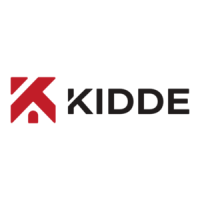General Information
06-237619-001 1-17 April 2020
1-10 PRESSURE RELIEF/VENT
When released, fixed fire extinguishing systems employing compressed gases will introduce an
additional volume of gas due to expansion within the room.
To compensate for the increase in pressure, a suitable means of pressure relief/vent
opening(s) to free air shall be employed.
The free area of these openings/vents shall be sufficient to avoid structural damage.
Normal rooms can withstand an increase in pressure of approx. 0.07 psig (5 mbar). The
structural strength should always be obtained in writing from the client/end user or project
consultant. If unable to obtain such information, use the lowest available structural strength
within the hydraulic calculation software.
Pressure relief/vents should always have a fire rating in accordance with the structural element
in which they are sited. Large glass surfaces and light constructions may demand a lower
pressure than 0.07 psig (5 mbar).
Pressure relief/vents should be fitted at high level, clear of any direct nozzle discharge, and at
the end of the discharge the pressure relief/vent shall close maintaining the extinguishing
concentration for as long as possible. Gravity dampers or pressure rated dampers can be used
for this purpose
1-11 SERVICE AND MAINTENANCE
It is not uncommon for routine maintenance to be overlooked or given insufficient attention by
the owner of the system. Neglecting routine maintenance puts at risk the lives of occupants of
the premises, the equipment being protected, and could cause potentially crippling financial
losses.
The importance of maintenance cannot be emphasized enough.
Trained distributors and competent personnel shall regularly service a Kidde Inert Gas System.
The service engineer shall be proficient at installation and commissioning of Kidde Inert Gas
systems as well as having detailed knowledge of the system’s components.
A minimum of two thorough inspection per year shall be undertaken for an installation. The
inspection shall include a check of the integrity of the protected volume and a comparison with
the volume used at the design and installation of the system. Any significant change to the
room’s volume from that used at the design stage will affect the resulting oxygen concentration
after a release and may require corrective action to be taken.
Maintenance shall be performed in accordance with Chapter 6 of this manual and applicable
National Standards.
1-12 RETROFITABILITY
Retrofitting a Kidde Inert Gas System into an existing piping network shall only be done after
close examination of the installed pipe work, including verification of installed pipe and fittings
material by hydraulic calculation, visual check of surface treatment condition, corrosion,
external/internal leak and pressure testing

